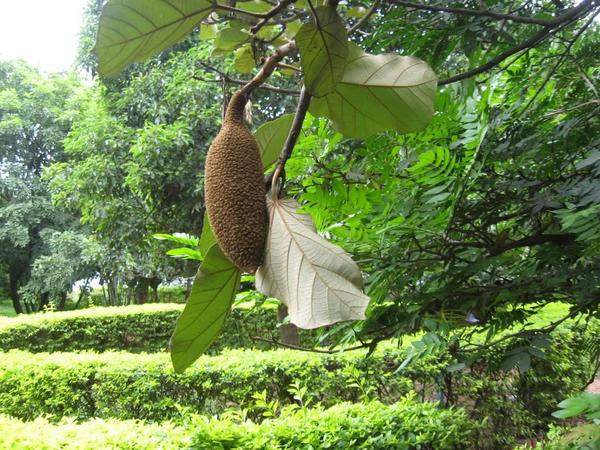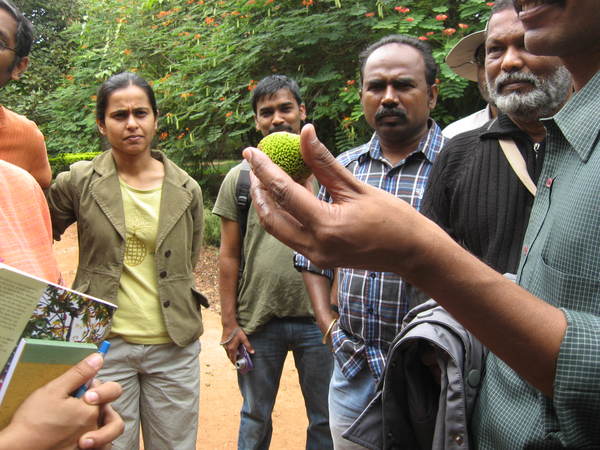Kanaka Champa tree with its seeds Pic: Usha Hariprasad
Walking amid heritage trees can give you a sense of history and a deep connection towards nature. The fascinating facts revolving around these leafy guardians, the deep bonds between trees and the winged birds, animals and other creatures can whisk you away from the hustle-bustle of the city.
The two-hour walk organised by Hasiru-Usiru on 10 August at Hebbal Lake proved to be an eye-opener in every sense.
At the onset, the walkers were introduced to a giant fig tree which showcased the delicate balance existing between the fig tree and the wasp. Each depended on the other for survival. The wasp needed the ripened fig to lay its eggs while the tree needed the wasp for pollination.
A little further there was the Bakul tree (Mimusops Elengi), a favourite of Tipu Sultan. The tree finds mention in “Meghaduta,” an ancient poetry written by Kalidasa. The flowers of this tree are very fragrant and sweet smelling. What’s more, the fragrance remains even when the flowers are dried. The fruits are sweet but astringent. The bark, flower, fruits and seeds of the tree have medicinal value as well.
Tree that gives life to child
The Putranjiva tree, also known as Lucky Bean tree stood a few yards away. The stones of this tree (the hard seed has the stone) are woven into necklaces and tied around children. This is done to ward off evil spirits and illness. That is why the tree has got the name, child’s amulet tree, child-life (Putranjiva) tree. A decoction is also made of the leaves and stones of this tree and given to children during colds and fever.
The Kadamba tree (Neolamarckia Cadamba) associated with Krishna with its scented shade and easy-to-climb branches stood further away. The scented flowers are an important ingredient in Indian perfumes. It is said that the name of Kadamba dynasty was derived from the Kadamba tree and was regarded as a holy tree by them.
Tree with nutlike fruit!
Finally there was the Haritaki (Terminalia Chebula) tree with its nutlike fruit, a chief component in Ayurvedic medicines. The tree is a panacea for many illnesses ranging from constipation, indigestion to nagging coughs and colds. The fruits of the tree though slightly bitter, are devoured by deer’s of Bandipur and acquire a healthy sheen and glow in their coat. Haritaki is also an important constituent of Triphala, an Ayurvedic herbal rasayana.
The Singapore Cherry, the exotic Paper Mulberry Tree with their sticky leaves, the Kanak Champa of Western Ghats, the Red/Yellow Peacock Trees were some of the other treasures hidden in the Lake vicinity.
Hasiru Usiru members and enthusiasts participating in Tree Walk programme Pic: Usha Hariprasad
The walk was led by passionate members of Hasiru Usiru, Seshadri and Vinay Sreenivasa. Apart from identifying trees, Seshadri also explained the fascinating world of pollination by wind, birds and insects. A nearby visit to the Hebbal nursery was also included in the walks. All in all, an informative, leisurely walk in to the world of nature!
Hasiru Usiru conducts monthly walk/talk series, the details of which can be obtained from their groups:http://groups.yahoo.com/group/HasiruUsiru/


Inputs fromVinay Sreenivasa from Hasiru Usiru:
Additional members guiding the tree walk were Poornima Kannan, Uma Bharath and Jahnavi Pai